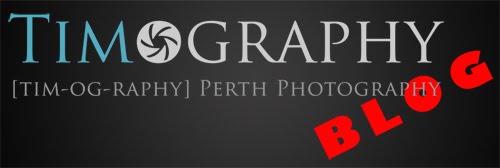 So it’s another week and time for another blog post. This week has mainly been a family affair with photography taking a bit of a back seat for a few days. It was nice and kind of weird all the same… on one hand it was great not to have to worry about clients, accounts, web updates or pending shoots; but on the other hand I did really miss not doing all of those things. Is that normal?
So it’s another week and time for another blog post. This week has mainly been a family affair with photography taking a bit of a back seat for a few days. It was nice and kind of weird all the same… on one hand it was great not to have to worry about clients, accounts, web updates or pending shoots; but on the other hand I did really miss not doing all of those things. Is that normal?This week also saw some great news in that I finally ordered my new Nikon D700 & accompanying MB-D10 Battery Grip plus a few other extra goodies including a couple more of the brilliant Bowens Pulsar Radio Transceivers from B&H Photo in New York. It took a phone call (from my cell phone!) to the US to sort out the price but it’s finally on it’s way. I can’t wait.
But the most important thing about this blog post is our latest Video Tutorial. Sadly this will be the last one for a couple of months as my good mate and he who owns all the video equipment and has the expertise to put the whole thing together is going out of town for a while. Not to worry, please click on the window below and enjoy the video. I will briefly explain the set-ups in the video after…
Ok, for all of these set-ups, my camera settings were – ISO100, 1/125th second @ f/8.0. when we recorded the intro we were planning to show the set-up using a high key background – but alas time got away from us and to keep the video under 10 minutes to appease the YouTube god’s we had to cut that bit out. Never mind.
Set-up #1 – Single overhead softbox. This is enough all on its own to create a nice headshot. Nothing too complicated just simple, elegant light. You could have any colour backdrop behind your subject, just be aware that it will be quite a lot darker in the final image as it is not being directly lit.
Set-up #2 – Single overhead softbox augmented by a reflector. This makes such an unbelievable difference without actually adding any extra light; rather we are just bouncing the available light around even more. Cool huh.
Set-up #3 – Single overhead softbox augmented by a background light. In a similar manner to the technique shown in Video Blog #2, we are using a single light on the backdrop which is controlled by using a grid attachment. It was set to meter at f/5.6, or 1 stop less than the key light (at f/8.0 remember). This is not so critical on a white background but becomes more apparent then you are using a coloured backdrop, once again as covered in my blog post Video Blog #2.
Set-up #4 – Single overhead softbox augmented by a background light and using subtractive lighting with the foam core panel. Wow that’s a mouthful. This is where things start to get cool. Take notice of the two still images that are shown on the video. Note that there is shadow on the left side (models right side) of Jaylee’s face, even though we are still only using one overhead light. This is because the white panel on her left is reflecting light but the black panel on her right is absorbing the light. This is so easy to achieve and you could even substitute a piece of black cardboard of you don’t have a foam core at your disposal. Once again the backdrop light is metered to f/5.6 so it doesn’t stand out too much.
Set-up #5 – Single overhead beauty dish augmented by a background light and using subtractive lighting with both of the foam core panels. This goes further to enhance the shadows produced by the black foam cores. Another bonus is that the grid reflector on the beauty dish is now killing the spill from the key light that was falling onto the backdrop in the previous set-ups, hence the reason the backdrop appears much darker; even though I have not changed the metering from the last set-up. The backdrop light has been moved however from the floor stand directly behind the model to off to the side wall of the studio, but it is still aimed at the same spot on the backdrop and still metered at f/5.6 to make the backdrop appear to be a darker red than it actually is; remembering that our key light is still metered at f/8.0. Easy!
So there you go - some really simple lighting set-ups to achieve some nice looking headshots in the studio with only one or two lights. I hope you got something out of it! See you in the next blog post...


